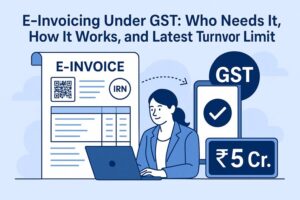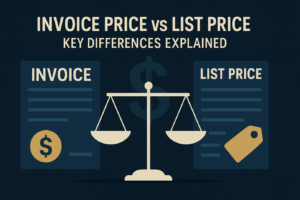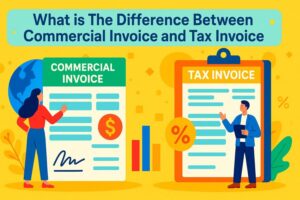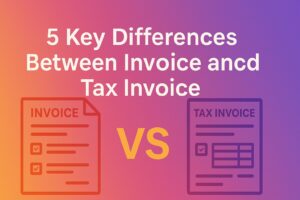What is the Difference Between Invoice and Sales Order
- 26 Nov 25
- 10 mins
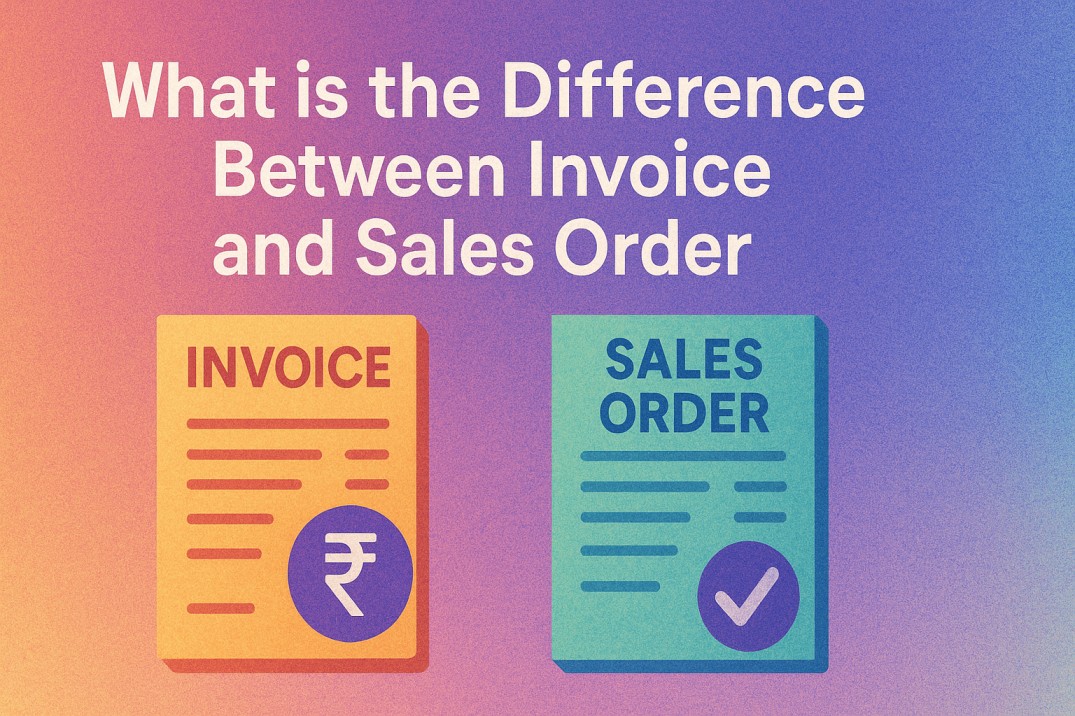
What is the Difference Between Invoice and Sales Order
- What are the Key Differences Between Sales Order and Invoice?
- What is a Sales Order?
- What are the Elements of a Sales Order?
- 4 Different Types of Sales Orders
- What is an Invoice?
- What are the Elements of an Invoice?
- 3 Different Types of Invoices
- Importance of Sales Order and Invoices
- 4 Ways of Automation of Sales Order and Invoice Processing
- Conclusion
Key Takeaways
- The difference between invoice and sales order lies mainly in timing. Sales order comes before delivery, while invoice comes after delivery.
- A sales order confirms the buyer’s intent, whereas an invoice formally requests payment.
- Sales orders guide internal processing and production, while invoices impact accounting as accounts receivable.
- Sales orders are not legally binding, but invoices act as legal payment documents.
- Using both documents reduces disputes, ensures clarity, and strengthens financial tracking.
Ever wondered why businesses use both a sales order and an invoice for the same transaction? While they may seem similar, understanding the difference between invoice and sales order is key to avoiding billing errors, delivery delays, and accounting mismatches.
In fact, studies show that companies with streamlined documentation reduce transaction disputes by over 30%. Whether you are a business owner, accountant, or just curious, this guide will help you clearly grasp what sets these documents apart, and why each plays a vital role.
So, let us break it down.
What are the Key Differences Between Sales Order and Invoice?
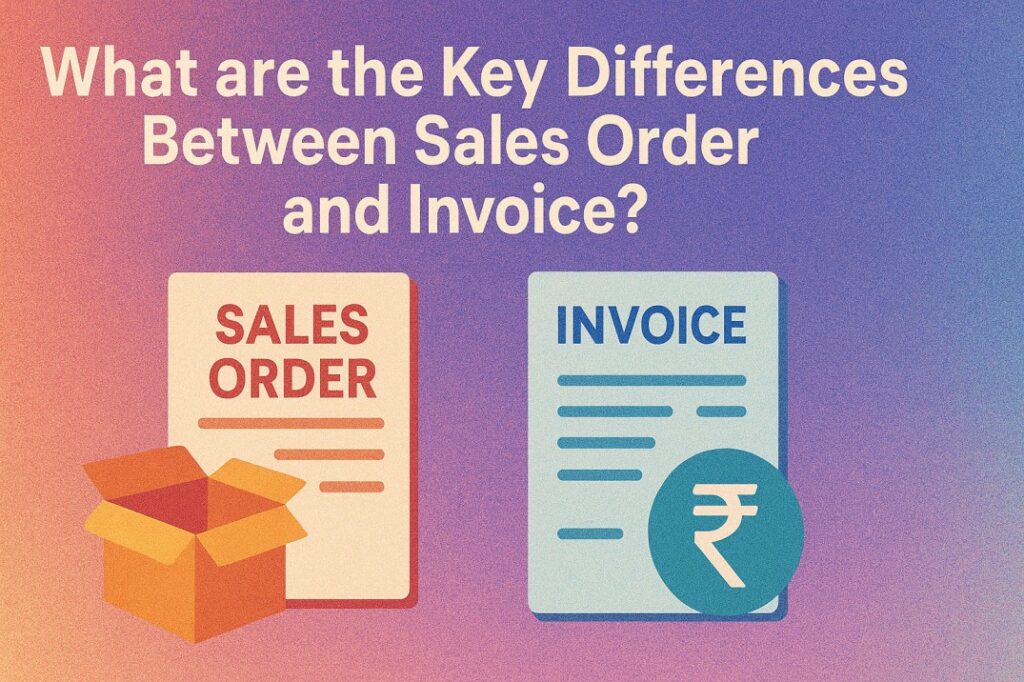
| Parameters | Sales Order | Invoice |
| What is it | A document seller sends to confirm the buyer's order | It is a document requesting payment after final delivery of goods and services |
| Purpose | Confirming and recording the purchase request of the customer | To request for payment from buyer |
| Inclusions | Includes details of product or service, quantity, price, and information of delivery | Includes total cost, tax payment, and details of the product or service |
| Timing | Created before completing any delivery of goods and services | Created after finalising the delivery of goods and services |
| Used By | The internal team of seller makes the product ready for delivery | Involves both buyers and sellers for processing payment |
| Accounting Impact | Not included as a financial transaction in any accounting book | Records as accounts receivable in accounting |
| Legal Use | Not a legally binding contract | Considered a legal document for payment |
| Status Indicator | Reflects the future intent of sales processes | Reflects the final process of sale completion |
| Importance | Helps in structured plan production | Helps in tracking revenue and collecting payments on time |
| Example | A furniture company sends out a sales order for 100 tables before processing for shipping | The same furniture company sends an invoice of ₹2,00,000, requesting payment after delivery of 100 tables |
Now that you know the key differences between a sales order and an invoice, it is time for understanding them in detail.
What is a Sales Order?
A sales order is a crucial document that businesses create to confirm a customer’s purchase request. Usually, it is the seller who prepares and issues this order. The seller maintains detailed records of all sales orders for future verification.
A sales order can also be used to resolve any discrepancies in the purchase process. The accounts payable team often refers to the sales order to verify the quantity of goods delivered and to cross-check the invoice.
What are the Elements of a Sales Order?
The key elements of a sales order include:
- Customer Information: Name, details of contact, and billing or shipping address
- Order Date: The date and time of placement of order
- Order Number: This is the unique identifier for order tracking
- Product Details: This includes the amount, specification, and overall costs of goods and services already ordered
- Shipping Information: It entails detailed information about the method of delivery, with its expected delivery date
- Payment Terms: This section entails terms and conditions about the payment method and timeline of payment
- Tax and Total Amount: It denotes taxes applicable to total cost of the order
4 Different Types of Sales Orders
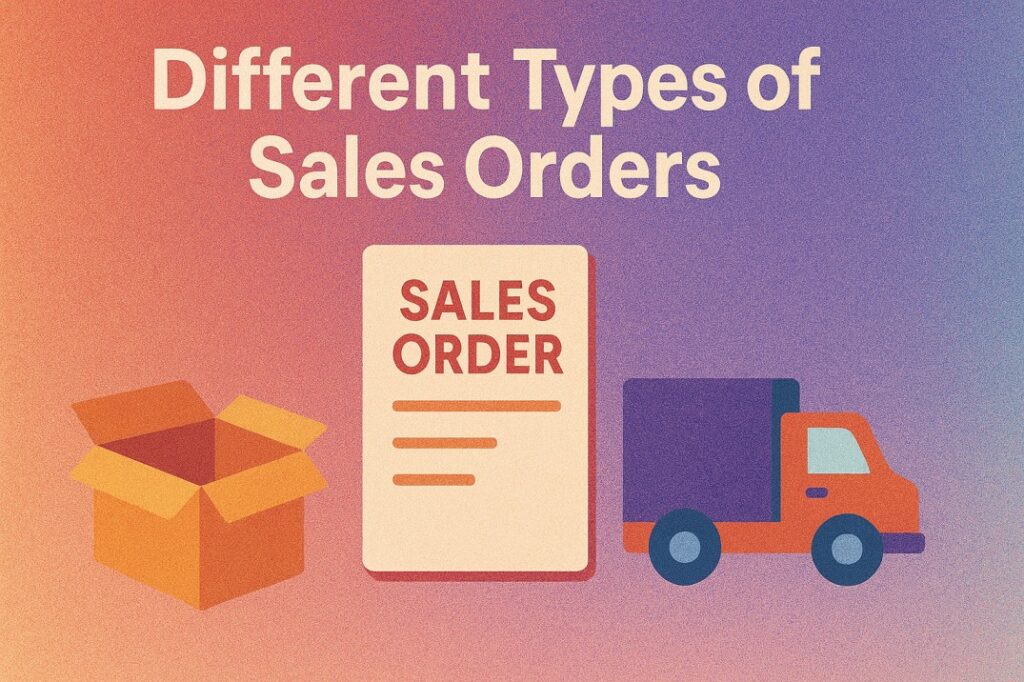
There are different types of sales orders depending on the type of purchase, supplier, and timeline of delivery. Let’s explore the types in detail below:
1. Cash Sales
Cash sales is when a customer make any purchase, choose a good and make payment for it immediately. The transaction process reflects directly into cash account of buyer, avoiding the receiving process of account.
2. Rush Sales Order
In this particular type of sales order, the customer makes payment for order on a later date but needs delivery earlier than expected. The supplier, however, offers the goods to the company on the same day and then sends an invoice for payment later on.
3. Scheduling Agreement
A scheduling agreement is a form of external agreement set up by a customer and a business. The scheduling agreement comprises specific quantities of goods with their respective delivery dates. Make sure to enter data in this agreement in the schedule lines. The delivered amount is also updated after delivery in respective agreement.
4. Third-Party Sales Order
A third-party sales order gets delivered through a third party rather than to the customer directly. It is the third party who delivers the goods to customer. This particular type of sales order is prevalent among small businesses.
What is an Invoice?
An invoice is a commercial document issued by the seller to request payment from the customer after goods or services have been delivered. It includes details of the products sold, the amount owed, and the payment terms. An invoice ensures accurate financial records and timely payments.
A business can only generate an invoice after delivering the product or service. Customers typically pay only after receiving the final delivery. The sales order may be used to fill in the invoice details accurately.
Once the invoice is prepared, it can be delivered as a hard copy or sent digitally using invoicing software.
What are the Elements of an Invoice?
The elements of an invoice are as follows:
- Invoice Number: This is the tracking identifier generated for invoice.
- Information of Seller: Includes the name of seller, address, and details of contact.
- Invoice Date: This entails the issuance date of invoice.
- Information of Buyer: Includes the name of buyer, address details and contact number.
- Due Date: This highlights the required deadline for payment.
- Price and Quantity: It includes the quantity and respective prices of items.
- Description of Goods and Services: It provides a detailed list of goods and services provided.
- Due Amount: This section reflects the total cost, including discounts and taxes.
- Terms and Conditions of Payment: Includes the methods of payment and timeline.
💡Use the PICE App's Invoice Generator for seamless and automated creation of invoices.
3 Different Types of Invoices

The different types of invoices are categorized as follows:
1. Pro forma Invoice
A pro forma invoice is a draft version of an invoice with a complete breakdown of estimated costs, but it doesn't ask for payment from customers. This type of invoice is particularly beneficial in projects and export sales where maintaining transparency of pricing is essential before finalizing an agreement.
Also, businesses can make necessary changes before finalizing the bill, maintaining accuracy and transparency. For instance, an exporter of textiles in India sends out a proforma invoice to a buyer in the UK before dispatching 500 phone covers.
2. Interim Invoice
An interim invoice breaks down the cost of a large project into smaller and affordable payments, maintaining a smooth cash flow throughout. This invoice helps in balancing financial stability and lets businesses accept payments partially as project continues.
For example, a construction company with a ₹2 crore budget on commercial building sends out an interim invoice of ₹10 lakh each month at different phases (during framing, roof, and foundation).
Most importantly, an interim invoice provides a structured plan of payment, benefitting both the businesses and customers by reducing the extra financial burden after completion of project.
3. Final Invoice
A final invoice is the final payment claimed after completion of a project or service. This invoice entails all detailed information of billing that includes taxes, charges of individual items, and terms of payment.
For example, after completion of a six-month project, a final invoice of ₹50,000 is sent out, subtracting an amount of ₹1,50,000 paid previously through interim invoices.
This particular type of invoice serves as a legal internal document and is commonly used in commercial transactions.
Importance of Sales Order and Invoices
Sales orders and invoices play a vital role in ensuring smooth business transactions. Here's why both are essential:
- Sales Order Confirms Buyer’s Intent: It captures the customer's request, including item type, quantity, and price. For example, if a retailer orders 100 phone covers, the sales order documents all key details of that request.
- Invoice Triggers Payment Process: Sent after goods or services are delivered, the invoice officially requests payment and aids in managing accounts. Continuing the example, the manufacturer sends an invoice once the phone covers are delivered.
- Enhances Clarity and Communication: Issuing both documents helps reduce misunderstandings between buyers and sellers.
- Boosts Efficiency: Companies using invoice automation report up to 80% cost savings and 70% faster processing, improving overall operational flow.
In short, without these documents, businesses risk payment delays, record-keeping errors, and potential revenue loss.
4 Ways of Automation of Sales Order and Invoice Processing

The four key steps involved in the automation of sales order and invoice processing are tracking of sales order, 3-way matching, invoice scanning, and invoice approval.
1. Tracking of Sales Order
Automation tools assist in monitoring the sales orders after placing an order by the customer, up to when their orders are delivered. All steps, including the order received, processed, packed, shipped, and delivered, can be tracked in real time. This has a greater visibility and is free of delays or errors.
2. 3-Way Matching
The step involves making comparisons between the three most important documents, i.e., the purchase order (PO), the goods received note (GRN), and the supplier invoice. These documents are compared through automation in order to make sure that the ordered items are received and charged properly. This assists when the mismatch or fraud is spotted and payment for the wrong commodities or services is avoided.
3. Invoice Scanning
The OCR (Optical Character Recognition) is a method for scanning documents and digital invoices. Within automated systems, invoices are scanned either on paper or digitally. The lock reads the supplier’s name, amount, and date in the invoice and enters this information into the accounting system. Doing this also minimises human error.
4. Invoice Approval
After invoice matching and verification, it is forwarded for approval. The automated workflows direct the invoices to the appropriate individual according to the value, department, or company-defined rules. A single click allows approvers to check the invoices and approve them. This is faster and prevents payments from lagging.
Conclusion
Both sellers and buyers must understand the difference between a sales order and an invoice. A sales order confirms a request from a customer, whereas an invoice asks for payment once goods or services have been provided. Applying these documents appropriately enhances communication and efficiency in business deals.
Automating the process assists in minimising delays, reducing errors, and promoting transparency. Through clear understanding and application, businesses can make their customers happier and simplify financial undertakings.
 By
By 









